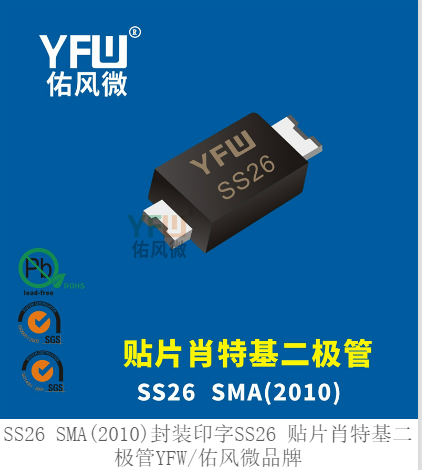Some parameters that must be considered when choosing a Schottky diode
We often use Schottky diode in switching power supplies, but due to different manufacturers and other reasons, the performance varies greatly. When we choose Schottky diode, we must consider the following parameters:
Some parameters that must be considered when choosing a Schottky diode
We often use Schottky diode in switching power supplies, but due to different manufacturers and other reasons, the performance varies greatly. When we choose Schottky diode, we must consider the following parameters:
1. Conduction voltage drop VF
VF is the voltage drop across the diode when the Schottky diode is forward-conducting. When the current passing through the diode is larger, the VF is larger; when the diode temperature is higher, the VF is smaller.
Some parameters that must be considered when choosing a Schottky diode
2. Reverse saturation leakage current IR
IR refers to the current flowing through the Schottky diode when the reverse voltage is added to both ends of the Schottky diode. The reverse leakage current of the Schottky diode is relatively large. The choice of Schottky diode is to choose a Schottky with a smaller IR as much as possible. diode.
3. Rated current IF
Refers to the average current value converted from the allowable temperature rise of the Schottky diode during long-term operation.
4. Larger inrush current IFSM
Excessive forward current allowed to flow. It is not a normal current, but an instantaneous current, and this value is quite large.
Some parameters that must be considered when choosing a Schottky diode
5. Larger reverse peak voltage VRM
Even if there is no reverse current, as long as the reverse voltage is continuously increased, the Schottky diode will be damaged sooner or later. This kind of reverse voltage that can be added is not an instantaneous voltage, but a forward and reverse voltage that is repeatedly added. Since an AC voltage is applied to the rectifier, its maximum value is an important factor specified. The maximum reverse peak voltage VRM refers to the maximum reverse voltage that can be added to avoid breakdown. The current Schottky higher VRM value is 150V.
6. Larger DC reverse voltage VR
The above-mentioned larger reverse peak voltage is the peak voltage that is repeatedly applied, and VR is the value when DC voltage is continuously applied. For DC circuits, the maximum DC reverse voltage is important to determine the allowable and upper limit values.

Contact: Emma Tan
Phone: +8613650089053
E-mail: emma@yfwdiode.com
Add: No.9 Cuibi street,Nancheng,Zhang mutou town,Dongguan City,Guangdong Province